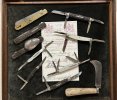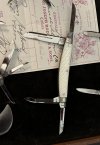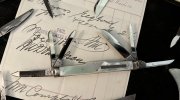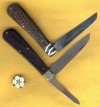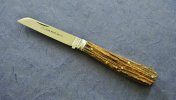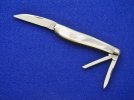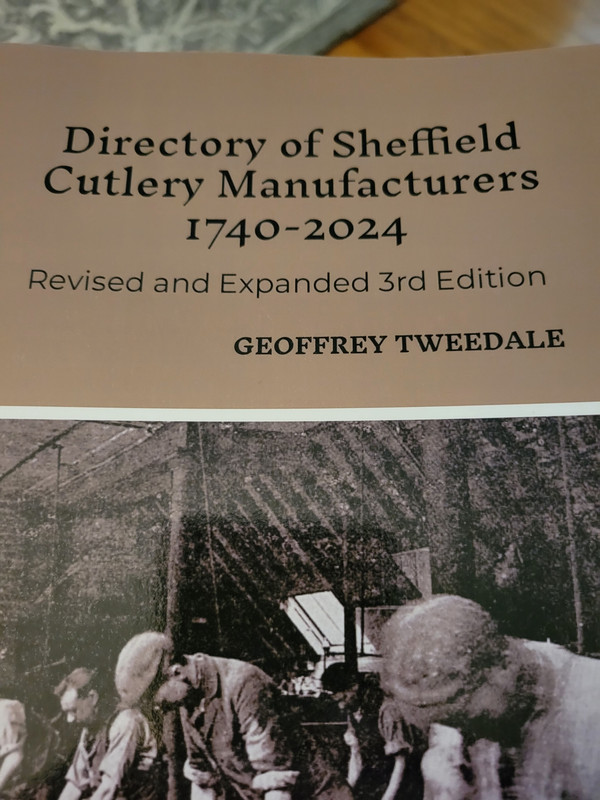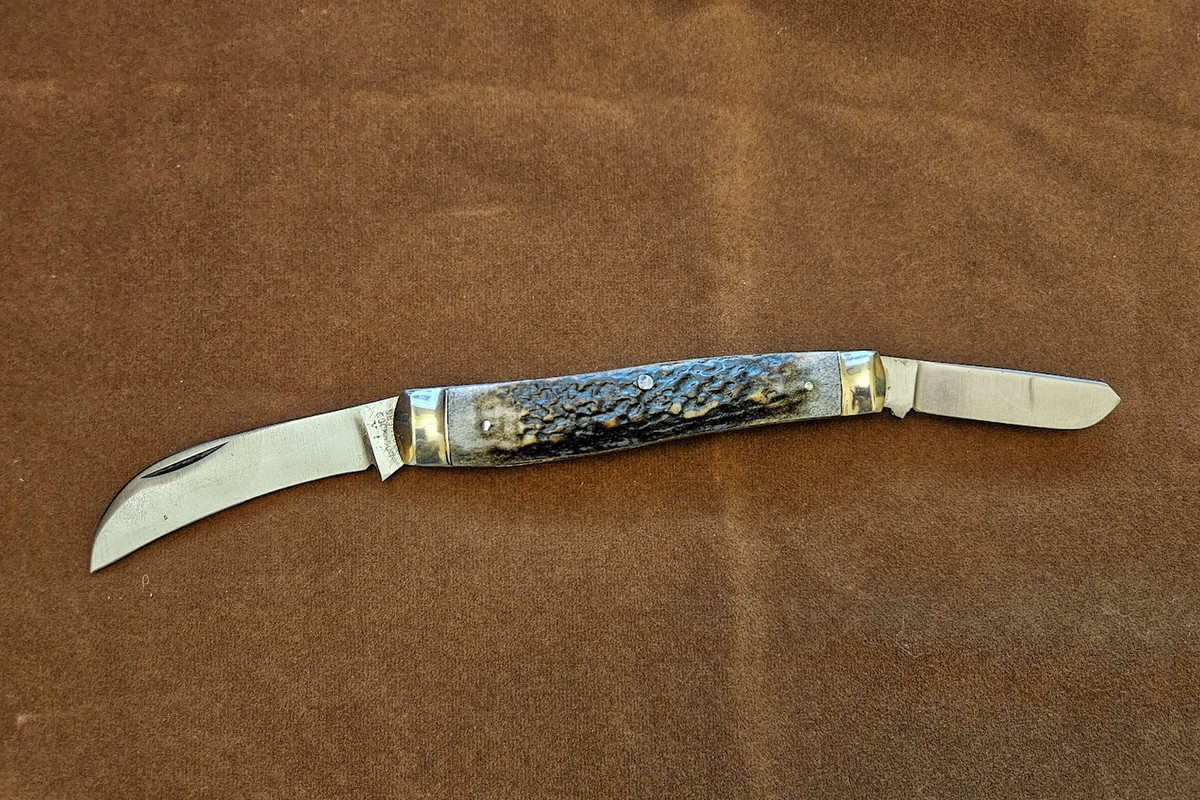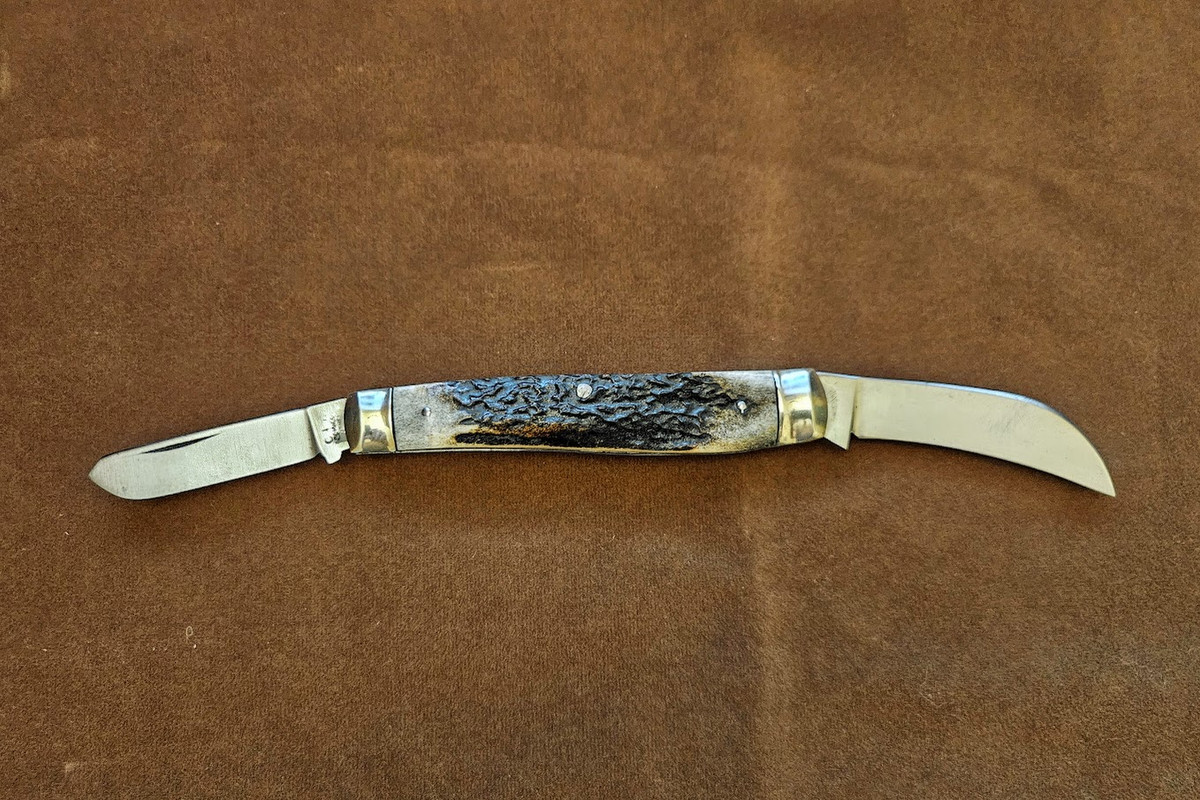 ed_is_dead
ed_is_dead
A wonderful trove that salesman's sample board from Joseph Elliot. Plus, this corresponds to the era that this thread is addressed to 1830-1930 not subsequent decades which are of little relevance.
The prices shown in the old LSD Pounds, Shillings, and Pence system whereby a Pound was dividided in 240 pennies abbreviated as d. (from the Latin denarius) 12 of these pennies d. made a Shilling and 20 Shillings made a Pound. Complicated, bizarre? Rather. Then it was decimalized at last in 1971, but moves were started to reform /decimalize the currency in early Victorian times with the introduction in 1849 of the Florin (called the Godless Florin as it did not have 'dei gratia' on it...) a 2 Shilling coin that was one tenth of a Pound, but as usual in Britain, prevarication rotted in.
Prices were shown on these cards by the Shilling and as these are high grade expensive knives they would likely be per dozen. What's significant here is the variation in prices between the handle materials, no lowly Wood or Bone here either! Stag seems the cheapest 36 Shillings 1.8 GBP so about 3 Shillings a knife, provided this is per dozen and not EACH (unlikely) Ivory examples 71 Shillings just under 6 Shillings each MOP examples are next at around 91 Shillings or 7.5 Shillings (7/6d) But Tortoiseshell appears to be generally the most costly scales some are 102 Shillings or 8.5 shillings each (8/6).
You say that you've found a calculator for prices/wages so that will be useful, ascertaining 'average' means per occupation is notoriously tricky. But let's assume the knife samples are from say 1890-1910 I think would be realistic, so find out average wages for that era. There was some inflation during this period but more from 1910-1914 and immensely more during the First World War (another reason leaders of all nations are so eager to agitate for war and compel their citizens to die, it makes a lot of money)
One detail I found was concerning MPs Members of Parliament (a scoundrel 'profession') In Britain in 1911 an annual basic salary was introduced for MPs set at 400 GBP per annum (it was assumed that an MP would have private means too, that hasn't really changed it's just morphed to lobbying) The average wage for 1908 was just 70 GBP per annum but this seems rather low. So the context is these knives were expensive for their era. However, if you ask most 'normal' people today what would they pay for a knife ? Not much would be the answer! Few other than knife enthusiasts would believe what a Custom knife costs say from 300-3000+ of any currency Euro, Dollar, Pounds, Swiss Franc


Thanks, Will



